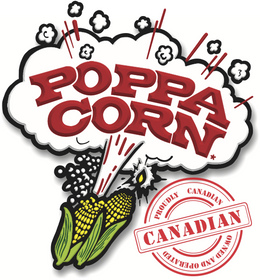Concession Industry Details to Keep in Mind
Running a small business is one of the most challenging and rewarding ventures you can take on, and selling food brings an even more unique set of circumstances. If you’re thinking about taking the leap and opening a food concession business, here are some factors you should consider before you get started.
Laws and Regulations
Small business regulations vary by province and locality. Start by checking your city or county government website to find out what kinds of licenses and permits you may need. If you have trouble finding relevant information, a good strategy is to speak with as many people in your industry as possible and get their input.
Visit fairs, festivals, and other local events to get tips and information from experienced professionals. Ask questions about aspects of the business such as:
- Whether and how to incorporate
- Local health codes
- Small business taxes and payroll taxes
Once you’ve done your research and gotten some anecdotal information, meet with both an attorney and an accountant to make sure you’ll be set up properly and protected legally.
Getting Your Food Concession Business off the Ground
When you’re ready to get into the specific details of starting a concession stand, you should make your decisions carefully. With the right thought and planning, the equipment you purchase today could continue to generate profits for you far into the future. For a fun foods business, not just any equipment and supplies will do.
Choosing Concession Equipment
While you may be able to find equipment from an online seller at a low price, beware starting your concession business with low-quality machines whose manufacturers offer little to no warranty or service. Instead choose a manufacturer that stands behind their products and has your success in mind.
For example, Poppa Corn offers an extended parts and service warranty, and we’re happy to consult with you about the volume of your business, the size of space you have available for equipment, and your budget to determine the proper machines for you. Our team will also help set up your machines and provide training for use and maintenance.
Planning Your Menu
As you start to think about which foods you should sell, keep profits at the top of your list. Running a small business, especially in the beginning, can be financially challenging. If you’re opening a traditional concession stand, before you venture into experimenting with novelty items, start out with the basic tried-and-true profit makers – items like:
- popcorn (78-95% profit margin)
- nachos and cheese (58-75% profit margin)
- hot dogs (57-71% profit margin)
- pizza (66-72% profit margin)
- pretzels (66-72% profit margin)
With low food costs and high demand, these staples will help you get into the black more quickly. Then, if business is booming, you can start branching out into other types of foods and see what resonates with your customers.
Finding a Supplier
Your supplier should be more than a vendor. It might be tempting to start out buying from a wholesale store, but you may find yourself wasting more time than planned making trips to pick things up, only to find the store is out of stock.
Instead, choose a supplier who carries what you need and also has the expertise to help you with your business – someone who can offer recommendations on new items and resources for creatively making, marketing, and selling your foods.
Setting Prices
Balance is important as far as pricing goes – you want to make a good profit and still sell your products at a fair price. In general, plan to charge two to four times what you paid for an item, but make sure to take into consideration what competitors charge for the same thing, and what industry trends look like. Think about your venue as well: larger venues catering to upscale events can sustain higher prices than smaller locales.
Keep a pulse on customer reactions to prices and adjust as necessary until you find the numbers that work best for you.
A Note on Staffing
Your business may eventually outgrow your personal time and abilities, which is certainly a good thing. But before you get to that point, you should have a plan in place for finding and hiring quality employees. Waiting to look for staff until you’re already pushed beyond your limits results in hasty decisions that may not be best for your business.
Find tips for recruiting and hiring, as well as working successfully with millennials, who make up the biggest proportion of today’s workforce.

